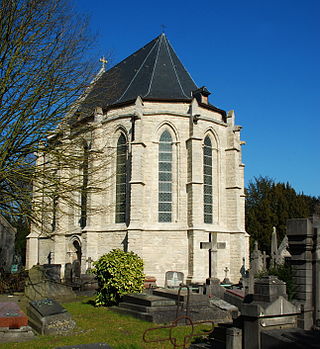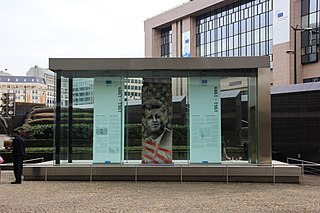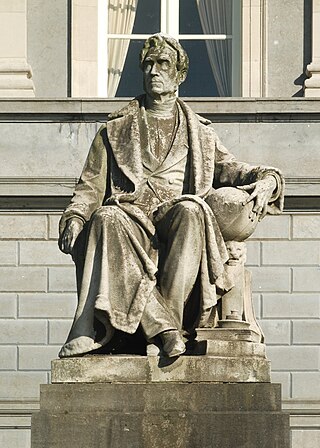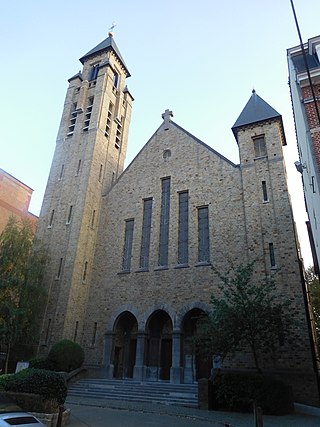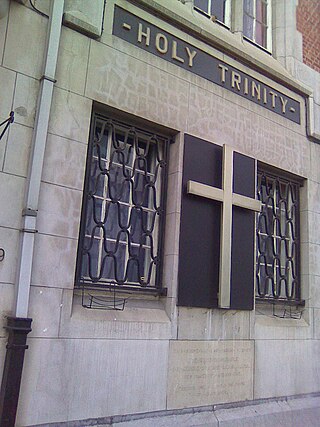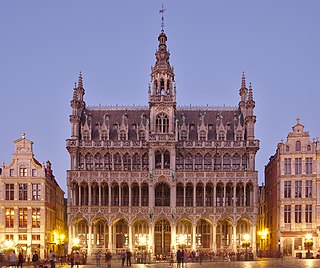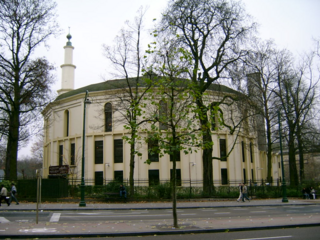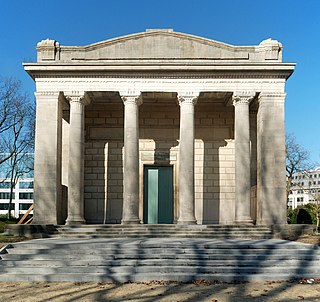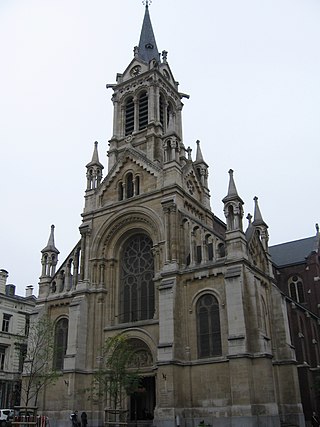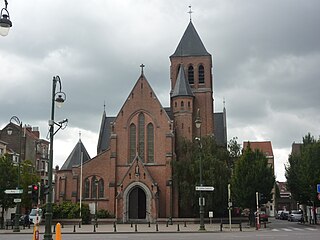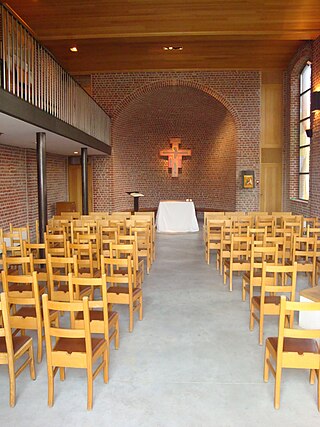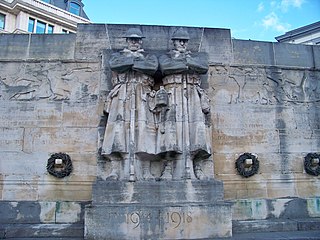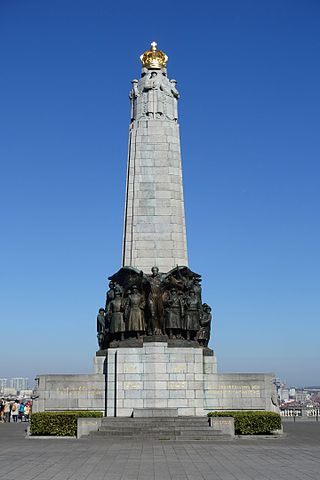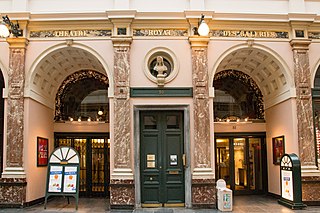75 Sights in Brussels, Belgium (with Map and Images)
Legend
Premium Sights
Book tickets, guided tours and activities in Brussels.
Guided Free Walking Tours
Book free guided walking tours in Brussels.
Welcome to your journey through the most beautiful sights in Brussels, Belgium! Whether you want to discover the city's historical treasures or experience its modern highlights, you'll find everything your heart desires here. Be inspired by our selection and plan your unforgettable adventure in Brussels. Dive into the diversity of this fascinating city and discover everything it has to offer.
Sightseeing Tours in BrusselsActivities in Brussels1. Mini-Europe
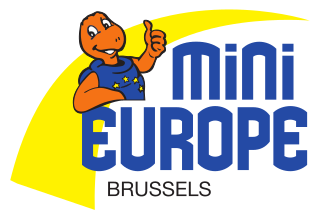
Mini-Europe is a miniature park located in the Bruparck entertainment park, at the foot of the Atomium, in Brussels, Belgium. Mini-Europe has reproductions of monuments in the European Union and other countries within the continent of Europe on display, at a scale of 1:25. Roughly 80 cities and 350 buildings are represented. Mini-Europe receives 350,000 visitors per year and has a turnover of €4 million.
2. Grand Place
The Grand-Place or Grote Markt is the central square of Brussels, Belgium. It is surrounded by opulent Baroque guildhalls of the former Guilds of Brussels and two larger edifices; the city's Flamboyant Town Hall, and the neo-Gothic King's House or Bread House building, containing the Brussels City Museum. The square measures 68 by 110 metres and is entirely paved.
3. Stock Exchange
The Brussels Stock Exchange, abbreviated to BSE, was founded in Brussels, Belgium, by decree of Napoleon in 1801. In 2002, the BSE merged with the Amsterdam, Lisbon and Paris stock exchanges into Euronext, renaming the BSE Euronext Brussels. The most well known stock market index on the BSE is the BEL20.
4. Le Penseur
The Thinker, by Auguste Rodin, is a bronze sculpture situated atop a stone pedestal depicting a nude male figure of heroic size sitting on a rock. He is seen leaning over, his right elbow placed on his left thigh, holding the weight of his chin on the back of his right hand. The pose is one of deep thought and contemplation, and the statue is often used as an image to represent philosophy.
5. Joseph Deschamps
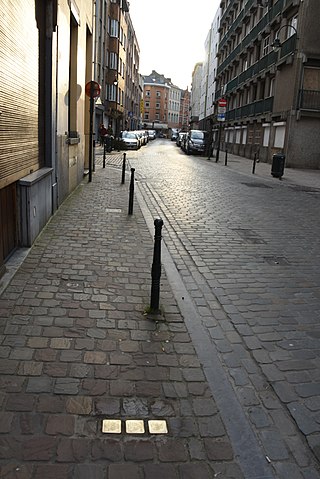
The list of Stumbling Stones in the Brussels-Capital Region provides an overview of the memorial stones that have been placed in cities in the Brussels-Capital Region since May 2009, as part of the Stumbling Stones project by the German sculptor-artist Gunter Demnig. Stumbling stones are also called stumbling stones, memorial cobblestones or pavés de mémoire. As the Stolpersteine project is ongoing, this list may be incomplete.
Wikipedia: Lijst van Stolpersteine in het Brussels Hoofdstedelijk Gewest (NL)
6. Royal Mint Theatre
The Royal Theatre of La Monnaie is an opera house in central Brussels, Belgium. The National Opera of Belgium, a federal institution, takes the name of this theatre in which it is housed—La Monnaie in French or De Munt in Dutch—referring both to the building as well as the opera company. As Belgium's leading opera house, it is one of the few cultural institutions to receive financial support from the Federal Government of Belgium. Other opera houses in Belgium, such as the Vlaamse Opera and the Opéra Royal de Wallonie, are funded by regional governments.
7. Saint Michael and Gudula Cathedral
The Cathedral of St. Michael and St. Gudula, usually shortened to the Cathedral of St. Gudula or St. Gudula by locals, is a medieval Catholic cathedral in central Brussels, Belgium. It is dedicated to Saint Michael and Saint Gudula, the patron saints of the City of Brussels, and is considered to be one of the finest examples of Brabantine Gothic architecture.
Wikipedia: Cathedral of St. Michael and St. Gudula (EN), Website
8. House of European History
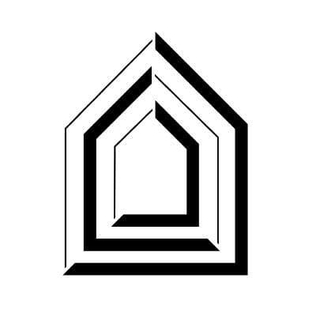
The House of European History (HEH) is a history museum and cultural institution in Brussels, Belgium, focusing on the recent history of Europe. It is an initiative by the European Parliament, and was proposed in 2007 by the Parliament's then-president, Hans-Gert Pöttering; it opened on 6 May 2017.
9. Royal Palace of Laeken
The Palace of Laeken or Castle of Laeken is the official residence of the King of the Belgians and the Belgian royal family. It lies in the Brussels-Capital Region, 5 km (3 mi) north of the city centre, in Laeken, and sits in a large private park called the Royal Domain of Laeken.
10. Brussels Town Hall
The Town Hall of the City of Brussels is a landmark building and the seat of the City of Brussels municipality of Brussels, Belgium. It is located on the south side of the famous Grand-Place/Grote Markt, opposite the neo-Gothic King's House or Bread House building, housing the Brussels City Museum.
11. Jeanneke Pis
Jeanneke Pis is a modern fountain sculpture in central Brussels, Belgium. It was commissioned by Denis-Adrien Debouvrie in 1985 and erected in 1987 as a counterpoint to the city's famous Manneken Pis. The 50-centimetre (20 in) bronze statue depicts a naked little girl with short pigtails, squatting and urinating on a blue-grey limestone base.
12. Boule et Bill - Bollie en Billie

Boule et Bill is a popular comic, created in 1959 by Belgian writer-artist Jean Roba in collaboration with Maurice Rosy. In 2003, the artistic responsibility of the series was passed on to Roba's former assistant Laurent Verron. The stories center on a typical family: a man and his wife, their young son Boule and Bill the cocker spaniel.
13. Brussels Park
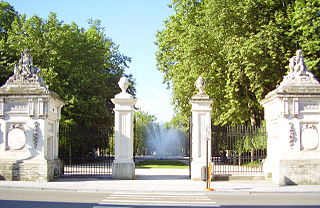
Brussels Park is the largest urban public park in central Brussels, Belgium. Formerly known and still sometimes colloquially referred to as the Royal Park, it was the city's first public park, being originally laid out between 1776 and 1783 in a neoclassical style by the French architect Gilles-Barnabé Guimard and the Austrian landscape architect Joachim Zinner, as part of an urban project including the Place Royale/Koningsplein. The area of the rectangular park is 13.1 ha.
14. Church of Our Lady of Laeken
The Church of Our Lady of Laeken is a Catholic parish church in the Brussels district of Laeken, Belgium. Built in neo-Gothic style, it was originally erected in memoriam of Queen Louise-Marie, wife of King Leopold I, to the design of the architect Joseph Poelaert.
15. Belgian Comic Strip Center
The Belgian Comic Strip Center is a museum in central Brussels, Belgium, dedicated to Belgian comics. It is located at 20, rue des Sables/Zandstraat, in an Art Nouveau building designed by Victor Horta, and can be accessed from Brussels-Congress railway station and Brussels-Central railway station.
16. Musée de la Porte de Hal - Hallepoort Museum
The Halle Gate is a former medieval city gate and the last vestige of the second walls of Brussels, Belgium. Built between 1381 and 1383, it was heavily restored in the 19th century in its current neo-Gothic style by the architect Henri Beyaert. It is now a museum dedicated to the medieval City of Brussels, part of the Royal Museums of Art and History (RMAH).
17. Ancienne Belgique
The Ancienne Belgique (AB) is a concert hall for contemporary music in Brussels, Belgium. Located in the historic heart of Brussels, it is one of the leading concert venues in Belgium, hosting a wide variety of international and local acts. Some 300,000 people attend a concert at the "AB" every year.
18. Théâtre de Poche
The Théâtre de Poche is a theatrical institution founded in Brussels in 1951 by Roger Domani (1926-1997) and Roland Ravez (1930-2017). It has been located at the entrance to the Bois de la Cambre since 1966. Initially experimental in its texts and forms, Théâtre de Poche has focused since the 1990s on a theatre devoted to social issues.
19. Barthélemy de Theux de Meylandt (1794-1874)
Barthélemy Théodore, Count de Theux de Meylandt was a Belgian Roman Catholic politician who served as the prime minister of Belgium three times. His family de Theux de Meylandt et Montjardin originated in Theux in 1341.
20. Église Saint-Josse - Sint-Joostkerk
The church of Saint-Josse in Saint-Josse-ten-Noode (Brussels) is a neo-baroque style church built from 1867 by the architect Jules-Jacques Van Ysendyck who took over the work begun in 1864 by Jean-Frédéric Van der Rit.
21. Palais des Académies - Academiënpaleis
The Academy Palace or Palace of the Academies is a neoclassical palace in Brussels, Belgium. It was originally built between 1823 and 1828 for Prince William II of Orange. Nowadays, it houses five Belgian academies including the Royal Academies for Science and the Arts of Belgium (RASAB). In English, it is also often called the Academy House.
22. André Vésale - Andreas Vesalius
The statue of Andreas Vesalius is a statue erected on the Place des Barricades in Brussels, the capital of Belgium, to the glory of Andreas Vesalius, a famous Brussels physician and anatomist of the sixteenth century.
23. Royal Theater Toone
The Royal Theatre Toone, often simply referred to as Toone, is a folkloric theatre of rod marionettes in central Brussels, Belgium, active since 1830, and the only traditional Brussels puppet theatre still in operation.
24. Queen Astrid Memorial
The Queen Astrid Memorial is a building erected in Laeken, a former municipality integrated into the city of Brussels in Belgium, in memory of Astrid of Sweden, fourth Queen of the Belgians and wife of King Leopold III, who died in a car accident on August 29, 1935 in Switzerland when Leopold's convertible went off the road near Küssnacht.
25. Théâtre de la Toison d’Or
The Théâtre de la Toison d'or, also abbreviated as TTO, is a theatre in Brussels, located in the Galeries de la Toison d'or, near the Louise district, in the municipality of Ixelles. Inaugurated in 1995, this theatre aims to promote humour, comedy of all kinds, as well as Belgian creation.
26. Het Zinneke
Het Zinneke, sometimes called Zinneke Pis by analogy with Manneken Pis, is a bronze sculpture in central Brussels, Belgium, erected in 1999. Created by Tom Frantzen, it represents a dog urinating against a bollard, along the same lines as Manneken Pis and its derivative Jeanneke Pis. It is an example of folk humour popular in Brussels.
27. Église Saint-Jean-Baptiste - Sint-Jan-Baptistkerk
The Church of St. John the Baptist is a Catholic parish church located in the centre of Molenbeek-Saint-Jean, a municipality of Brussels, Belgium. It is dedicated to Saint John the Baptist, the patron saint of Molenbeek.
28. Parc de Laeken - Park van Laken
The Laeken Park is a public park in Brussels created in the nineteenth century at the instigation of King Leopold II. Landscaped in style, it extends over more than 186 ha. It is located opposite the Royal Castle of Laeken.
29. Parlamentarium
The Parlamentarium, is the European Parliament's visitor centre, located in the Espace Léopold complex in Brussels, Belgium. It was officially opened on 14 October 2011 by the former President of the European Parliament Jerzy Buzek, and hosts a permanent exhibition that features numerous multimedia components that explain the workings of the European Parliament and other European Union institutions on how laws are made and how member states work together. Situated on the Parliament's esplanade, the Parlamentarium is noted as the largest parliamentary visitors' centre in Europe and ranks second worldwide in size.
30. Pro Patria
The Monument to the Martyrs of the 1830 Revolution, also known as the Pro Patria Monument, is an allegorical monument on the Place des Martyrs/Martelaarsplein in Brussels, Belgium, commemorating the victims of the Belgian Revolution of 1830.
Wikipedia: Monument to the Martyrs of the 1830 Revolution (EN)
31. Monument au Travail - Monument aan de Arbeid
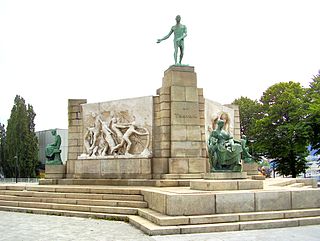
The Monument to Work in Brussels is located in the Laeken section, north of the large Vergote basin, on the Quai des Yachts. The monument, erected by the architect Mario Knauer in 1930, features five bronze sculptures and four high reliefs, the work of the sculptor Constantin Meunier (1831-1905) who worked on this posthumously completed project in the 1890s.
32. Design Museum Brussels

Design Museum Brussels is a museum located in the Heysel/Heizel Park in Brussels, Belgium, close to the Atomium. The space focuses on design works from the 20th and 21st centuries. It was formerly called the Art and Design Atomium Museum (ADAM) until 2020. The size of the museum is 5,000 m2 (54,000 sq ft) and it received about 126,000 visitors in 2019. Arnaud Bozzini is the museum's director.
Wikipedia: Design Museum Brussels (EN), Website, Facebook, Mapillary
33. Unity in Peace
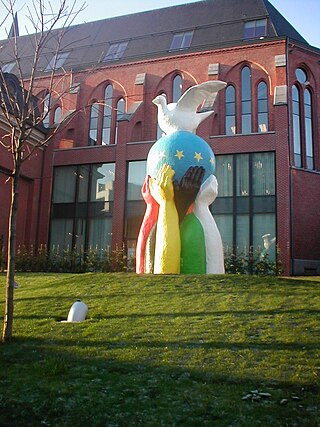
The Statue of Europe is a sculpture symbolising peace through European integration, while at the same time aiming to demonstrate the motto of the European Union (EU), "United in Diversity". It is located in the garden of Convent Van Maerlant in the crossroads of the Rue Van Maerlant/Van Maerlantsraat and the Chaussée d'Etterbeek/Etterbeeksesteenweg, in the European Quarter of Brussels, Belgium. Made out of resin, the statue measures more than 5 m and weighs nearly 800 kg. It was inaugurated on 9 December 2003 by Neil Kinnock and Viviane Reding, who respectively were Vice-President of the European Commission and Commissioner for Culture at the time. 2003 was the European Year of People with Disabilities, and the Eastern enlargement of the EU was awaited.
34. Église Saints-Jean-et-Etienne aux Minimes - Sint-Jan en Sint-Stefaan Ter Miniemenkerk
The Church of St. John and St. Stevens of the Minims or Church of the Minimes is a church in the Marolles district of Brussels. The church used to belong to a minimes monastery and is dedicated to Saint John and Saint Steven. It used to be known for its Loreto cult, now more for the classical music concerts that are given there.
35. Église Sainte-Alice - Sint-Aleydiskerk
St. Alice's Church is a Roman Catholic church in the municipality of Schaerbeek, Brussels, Belgium. Located at 136 Avenue Dailly, and built to replace an earlier building, the church dates from 1953. Since the beginning of the twentieth century it has been a Catholic parish.
36. Galerie du Roi - Koningsgalerij
The King's Gallery in Brussels, along with the Queen's Gallery and the Princes' Gallery, is part of the Royal Galleries of Saint-Hubert built by the architect Jean-Pierre Cluysenaar and inaugurated in 1847; it extends from the rue des Bouchers to the rue d'Arenberg. It is home to the Théâtre Royal des Galeries.
37. Brussels Expo
The Brussels Exhibition Centre, also known as Brussels Expo, is the primary event complex in Brussels, Belgium. Located on the Heysel/Heizel Plateau in Laeken, the twelve halls that comprise it are used for the largest national and international trade fairs, exhibitions and other events. With 115,000 m2 (1,240,000 sq ft) of facility space, they constitute the largest exhibition space in the Benelux. They are also a remarkable witness to the evolution of construction techniques during the 20th century.
38. Millennium Iconoclast Museum of Art
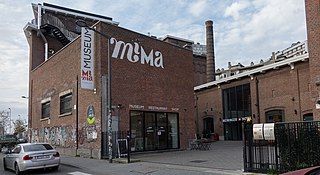
The Millennium Iconoclast Museum of Art (MIMA) is a contemporary art museum in Molenbeek-Saint-Jean, a municipality of Brussels, Belgium. It is a privately owned non-profit museum that was founded in 2016. It is located at 41, quai du Hainaut/Henegouwenkaai, along the Brussels–Charleroi Canal, in the former building of the Belle-Vue brewery.
Wikipedia: Millennium Iconoclast Museum of Art (EN), Website
39. Château du Belvédère - Kasteel Belvédère
The Belvédère Château is a residence of the Belgian royal family in Laeken, Brussels, which currently houses King Albert II and his wife, Queen Paola. It is near the Royal Palace of Laeken, the official residence of the King and Queen of the Belgians. Another nearby residence, the Villa Schonenberg, is home to Princess Astrid, the sister of the current king, Philippe.
40. Obélisque Anspach - Obelisk Anspach
The Anspach Fountain is an eclectic-style fountain-obelisk erected between 1895 and 1897 in the centre of the Place de Brouckère/De Brouckèreplein in Brussels, Belgium. Designed by the architect Charles-Émile Janlet, it is dedicated to the memory of Jules Anspach, a former mayor of the City of Brussels.
41. Archive and Museum for the Flemish Living in Brussels
The Archives and Museum for Flemish Life in Brussels, abbreviated AMVB, was founded in 1977. It is a pluralistic archive institution within the Brussels-Capital Region that acquires, manages, researches and disseminates the movable and intangible heritage of Brussels, Dutch-speaking organisations, individuals and families. The AMVB is located on the Arduinkaai in the centre of Brussels.
Wikipedia: Archief en Museum voor het Vlaams Leven te Brussel (NL), Website
42. Museum of the National Bank of Belgium
The Museum of the National Bank of Belgium is a museum in central Brussels, Belgium, belonging to the National Bank of Belgium (NBB). Opened in 1982, it is one of the oldest central bank museums in Europe.
Wikipedia: Museum of the National Bank of Belgium (EN), Website
43. Marc Sleen House
The Marc Sleen Museum was a museum in Brussels, Belgium, dedicated to the work of Belgian comics artist Marc Sleen, who is known for his series The Adventures of Nero, Piet Fluwijn en Bolleke and De Lustige Kapoentjes. It was located across the street from the Belgian Comic Strip Center at 33–35, rue des Sables/Zandstraat, and was served by Brussels-Congress railway station and Brussels-Central railway station. It was founded in 2009.
44. La Fonderie
La Fonderie, Brussels Museum of Industry and Labour is a museum of industrial history in Brussels, Belgium. It collects objects, documents and oral history on the city's industrial past and visualises the working history of Brussels. It is managed as a nonprofit organisation focusing on analysing and exhibiting the economic and social history of the Brussels region. It publishes a magazine, organises guided tours and provides educational activities. La Fonderie also houses a documentation centre open to the public.
Wikipedia: La Fonderie, Brussels Museum of Industry and Labour (EN), Website
45. Monument to the Belgian pioneers in Congo
The Monument to the Belgian Pioneers in Congo is an allegorical monument in the Parc du Cinquantenaire/Jubelpark in Brussels, Belgium. It was designed by the sculptor Thomas Vinçotte and crafted between 1911 and 1921 to commemorate the Congo Free State. In particular, it honours the Belgian 'pioneers' (soldiers) who brought 'civilisation' to the Congo, especially through the Congo–Arab War (1892–1894) that sought to conquer present-day East Congo and end the Arab slave trade there.
Wikipedia: Monument to the Belgian Pioneers in Congo (EN), Heritage Website
46. John Cockerill
The Monument to John Cockerill is a group of statues erected in Brussels, Belgium, in memory of the Belgian-British industrialist John Cockerill, a pioneer of the steel industry and the railways in Belgium in the 19th century, as well as the industrial workers of Belgium.
47. L'Agneau Blanc - Het Wit Lammeke
The Maison de l'Agneau Blanc or simply l'Agneau Blanc is a Baroque house, built in 1696, located at 42, rue du Marché aux Herbes/Grasmarkt in Brussels, Belgium, parallel to the Grand-Place/Grote Markt. It has been a protected heritage site since 2011.
48. Visit Flanders
Tourism Flanders is an agency of the Flemish government and falls under the authority of the Flemish Minister of Tourism. From the Flemish government, Tourism Flanders offers support to tourism partners in Flanders in the field of tourism in the broadest sense of the word.
49. François Anneessens - Frans Anneessens
The monument to François Anneessens is an eclectic statue erected in memory of François Anneessens, doyen of the profession of the Four Crowned Ones executed in public on the Grand-Place in Brussels in 1719 at the time of the Austrian Netherlands.
50. Jardin de la Vallée du Maelbeek - Maalbeekdaltuin
The Jardin de la vallée du Maelbeek (French) or Maalbeekdaltuin (Dutch) is a small green space on the corner of the Rue de la Loi/Wetstraat and the Chaussée d'Etterbeek/Etterbeeksesteenweg at the heart of the European Quarter of Brussels, Belgium. It was inaugurated on 13 May 1951.
51. Parc d'Osseghem - Ossegempark
The Parc d'Osseghem is a 17-hectare forest park located on the Heysel plateau in Brussels. It was laid out between 1927 and 1935, on the initiative of Leopold II, according to the plans of the landscape architect Jules Buyssens, as part of the organisation of the 1935 Universal Exhibition.
52. Square des Griottiers - Morelleboomsquare
The Square des Griottiers is a small triangular square in Brussels in the municipality of Schaerbeek formed by the intersection of Avenue Émile Max, Avenue Milcamps and Avenue Félix Marchal. The inauguration of the square took place on November 22, 1992 on the occasion of the annual chapter of the Brotherhood of the Order of the Griotte. No dwelling bears this address.
53. Monument to the Dynasty
The Monument to the Dynasty is a monument erected in Brussels, Belgium, in memory of King Leopold I, first King of the Belgians. The monument is located in Laeken Park, on the Place de la Dynastie/Vorstenhuisplein, on top of a 50-metre-high (160 ft) hill. It completes the monumental axis, which starts from the portal of the Royal Palace of Laeken, and which leads to the monument after crossing the Avenue du Parc Royal/Koninklijk Parklaan via the Avenue de la Dynastie/Vorstenhuislaan.
54. Poelaert elevators
The Poelaert Elevators, in popular language Elevators of the Marolles is a public elevator in the Marolles/Marollen district of Brussels, Belgium. It connects the lower and upper town at the Square Breughel l'Ancien/Breughel de Oudeplein with the Place Poelaert/Poelaertplein, in the vicinity of the Palace of Justice. The elevator consists of two independent elevators, hence the plural elevators sometimes used for its name.
55. Musée du CPAS de Bruxelles - Museum van het OCMW van Brussel
The Museum of the Public Centre for Social Welfare of Brussels is a museum located in the Marolles district. It is located high up in an administrative building and can only be visited for about eight hours a week.
Wikipedia: Museum van het Openbaar Centrum voor Maatschappelijk Welzijn van Brussel (NL), Website
56. Jardin Colonial - Koloniale Tuin
The Colonial Garden of Laeken is an acclimatization garden for the plants of the Congo, created at the very beginning of the twentieth century, in Laeken, Belgium, by the botanist Émile Laurent, on the initiative of King Leopold II.
57. La Laitière - Het Melkboerinnetje
The Milkman's Wife is a statue in the Boterstraat in the Belgian city of Brussels. It is located in front of the St. Nicholas Church not far from the Grote Markt. The statue was made by the sculptor Marc de Vos. The statue is based on a ghostly legend that took place in the 1670s.
58. Mo(nu)ment Melancholia
The Mo(nu)ment Melancholia is a work of art in the Bloemenhof district in the Belgian city of Brussels. It is a creation of the South African artist Kendell Geers, who himself lived in the Bloemenhof district for some time. The price tag of the artwork is 50,000 euros.
59. Église Sainte-Barbe - Sint-Barbarakerk
The Church of St. Barbara is an Orthodox religious building in the Gothic Revival style located on the Place de la Duchesse de Brabant in Molenbeek-Saint-Jean, Brussels, Belgium. Of modest size, the church was built during the second half of the nineteenth century as a place of Catholic worship. Recently it was entrusted to the Romanian Orthodox Church, which made it one of their parishes. The monument has been classified as a national heritage site of Belgium since 1998.
60. Chapelle Notre-Dame de Laeken - Onze-Lieve-Vrouwekapel
The Chapel of Our Lady is the choir and only surviving part of the former Church of Our Lady of Laeken in the Belgian city of Brussels in the Brussels-Capital Region. The choir of this former church is located in the cemetery of Laeken, northwest of the current Church of Our Lady.
61. Kennedy Piece
Kennedy Piece is a monument in Brussels, consisting of a piece of the Berlin Wall depicting the American president John F. Kennedy. The monument is located next to the headquarters of the European Commission, on the esplanade of the Berlaymont building. The piece of the Berlin Wall was brought to the headquarters of the European Commission to remind the European people that the European continent is peaceful, prosperous and united.
62. Adolphe Quetelet
The statue of Adolphe Quetelet is a monument erected in Brussels, Belgium, in memory of the mathematician, astronomer, naturalist and statistician Adolphe Quetelet, who was the founder of the Royal Observatory of Belgium.
63. Église Notre-Dame du Rosaire - Onze-Lieve-Vrouw van de Rozenkranskerk
The Church of Our Lady of the Rosary is a church building in the Belgian municipality of Uccle in the Brussels-Capital Region. The church is located on the Montjoielaan in the northwest of the municipality of Uccle.
Wikipedia: Onze-Lieve-Vrouw van de Rozenkranskerk (Ukkel) (NL)
64. Pro-Cathedral of the Holy Trinity
The Procathedral of the Holy Trinity is an Anglican church building in the Brussels municipality of Ixelles. The Anglican Communion, which has been present in Brussels for about two hundred years, originally met in private homes. It was only after the Battle of Waterloo that the first regular municipalities were established. The first chapel of this municipality was located in the Rue Belliard in Brussels. The current church was built between 1883 and 1885 by contractor Jean François according to the plans of architect William Barber. In 1897 the church was extended with the choir to a design by the architects Huvenne and Jasinski. After the First World War, in 1928, the Church House was erected along the street. In 2001, a modern hall complex was added to the church building.
Wikipedia: Heilige Drievuldigheidskathedraal (Brussel) (NL), Website
65. Maison du Roi - Broodhuis
The Brussels City Museum is a municipal museum on the Grand-Place/Grote Markt of Brussels, Belgium. Conceived in 1860 and inaugurated in 1887, it is dedicated to the history and folklore of the City of Brussels from its foundation into modern times, which it presents through paintings, sculptures, tapestries, engravings, photos and models, including a notable scale-representation of the town during the Middle Ages.
66. Grande mosquée de Bruxelles - Grote Moskee van Brussel
The Great Mosque of Brussels is a Muslim place of worship located in the Parc du Cinquantenaire in Brussels. Built in 1897 as an exhibition attraction, it was transformed into a Muslim place of worship in 1978 by Saudi Arabia, which managed it for forty years. From April 2019 to June 2023, it was led by the Executive of Muslims in Belgium, which is close to the Moroccan administration. It is no longer the most important mosque in Brussels, neither in terms of surface area, nor in number of worshippers, nor in influence.
Wikipedia: Grande mosquée de Bruxelles (FR), Heritage Website
67. Pavilion of Human Passions
The Pavilion of Human Passions, also known as the Horta-Lambeaux Pavilion, is a neoclassical pavilion in the form of a Greek temple that was built by Victor Horta in 1896 in the Parc du Cinquantenaire/Jubelpark of Brussels, Belgium. Although classical in appearance, the building shows the first steps of the young Victor Horta towards Art Nouveau. It was designed to serve as a permanent showcase for a large marble relief The Human Passions by Jef Lambeaux.
68. Église Saint-Gilles - Sint-Gilliskerk
The Church of Saint-Gilles is a Catholic religious building located in the Brussels municipality of Saint-Gilles (Belgium) Built in an eclectic style in 1868, it is - successively - the third place of worship of the Catholic parish community.
69. Église Saint-Joseph - Sint-Jozefkerk
St. Joseph's Church is a religious building built for Catholic worship and now administered by the Society of St. Pius X. It is located in Square Frère-Orban, in the Leopold district, not far from the district of squares, in the city of Brussels (Belgium).
Wikipedia: Église Saint-Joseph (Bruxelles) (FR), Website, Heritage Website
70. Chapel of the Resurrection
The Chapel of the Resurrection, also known as the Chapel for Europe, is a Catholic religious building with an ecumenical vocation located at 24 rue van Maerlant, in the heart of the European quarter of Brussels. Formerly the chapel of a convent of contemplative nuns, the building was restored and reopened in 2008 as a European ecumenical place. Worship and activities are celebrated in several languages, but mainly in English and French. The pastoral responsibility of the Chapel was entrusted to the Jesuits.
71. Église du Divin Sauveur - Goddelijke Zaligmakerkerk
The Church of the Divine Saviour is a Roman Catholic church building located on Avenue de Roodebeek in the Brussels municipality of Schaerbeek. Built in 1935 and enlarged in 1963, it is dedicated to the divine Saviour (Jesus Christ).
72. Anglo-Belgian War Memorial
The Anglo-Belgian War Memorial is a monument in Brussels, Belgium, which was commissioned by the British Imperial War Graves Commission and designed by the British sculptor Charles Sargeant Jagger. Unveiled in 1923 by the Prince of Wales, it commemorates the support given by the Belgian People to British prisoners of war during the First World War. It is located on the Place Poelaert/Poelaertplein near Brussels' Palace of Justice and the Belgian Infantry Memorial.
73. Église Saint-Nicolas - Sint-Niklaaskerk
The Saint-Nicolas church in Brussels, built around 1125, is one of the first four churches of the city of Brussels in Belgium and the best preserved in its successive developments. Being close to the Palais de la Bourse, it is commonly called Saint-Nicolas de la Bourse.
74. Monument to the Belgian Infantry
The Belgian Infantry Memorial is a monument in Brussels, Belgium, which stands in memory of the Belgian foot soldiers who fought in World War I and World War II. Designed by Edouard Vereycken, the memorial stands in front of Brussels' Palace of Justice and across the Place Poelaert/Poelaertplein from the Anglo-Belgian War Memorial. The memorial rests on a raised platform that overlooks Brussels' city centre. Translated into English, the inscription reads: "To the infantrymen who died for their country".
75. Théâtre Royal des Galeries
The Théâtre royal des Galeries is a theatre in central Brussels, Belgium, subsidised by the French Community of Belgium. It opened in 1847 and has continuously hosted theatrical activities ever since. It is located in the Royal Saint-Hubert Galleries and can be accessed from Brussels-Central railway station.
Share
Disclaimer Please be aware of your surroundings and do not enter private property. We are not liable for any damages that occur during the tours.

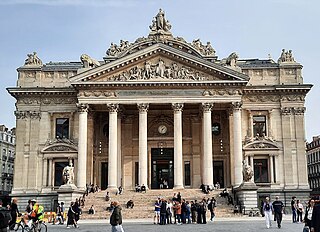
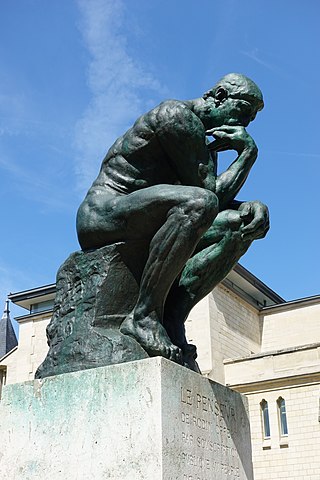
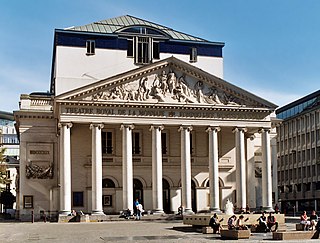
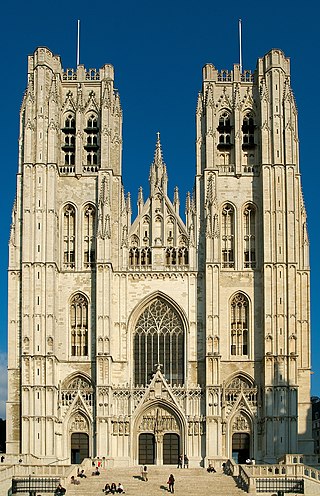
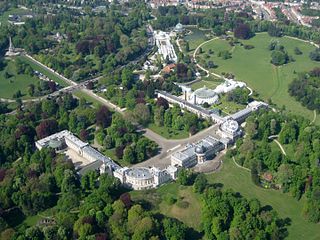
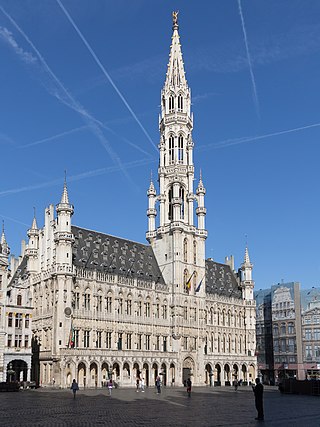
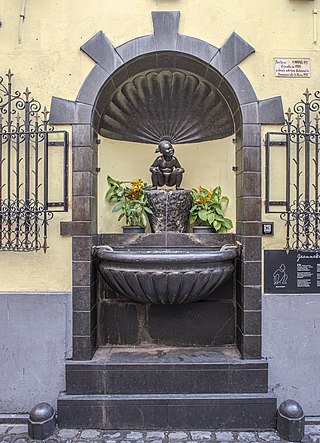


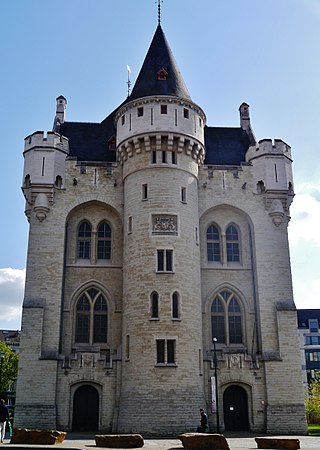
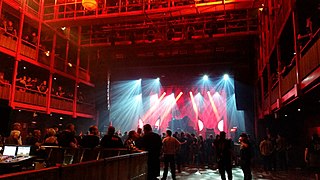

.jpg)

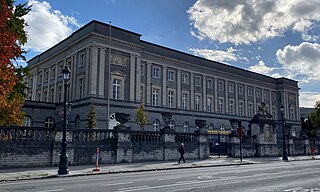
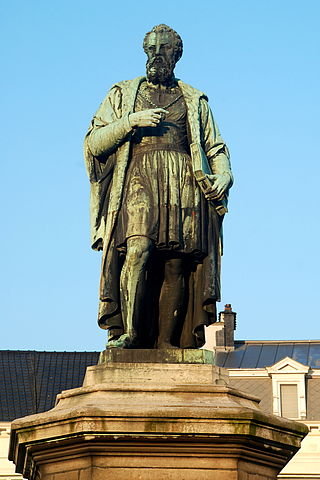
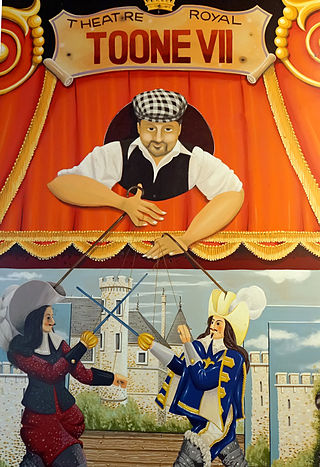
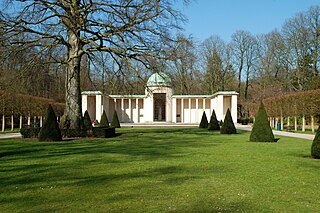
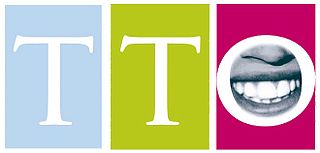
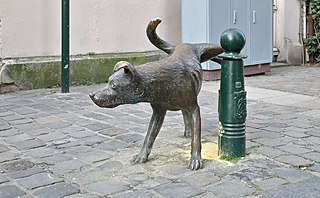
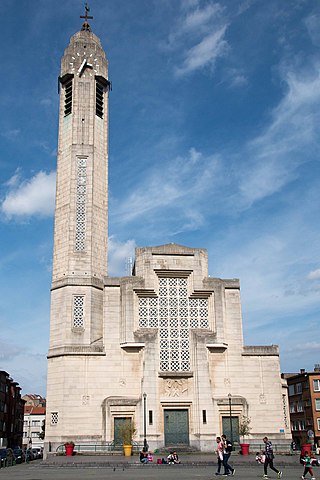
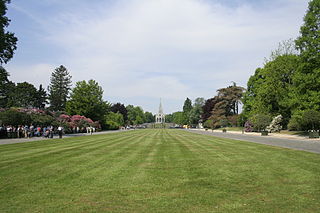
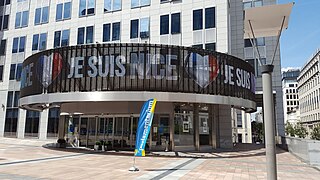

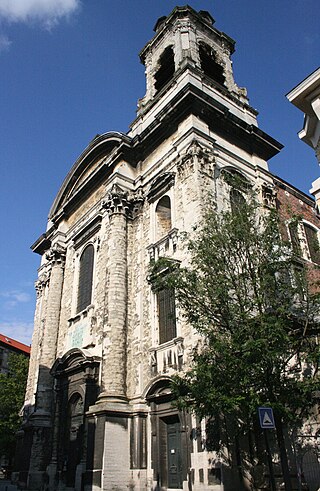
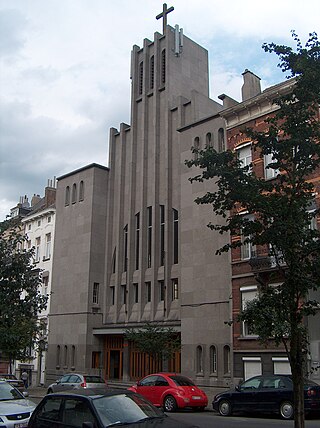
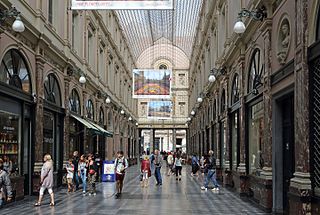
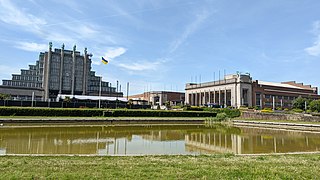
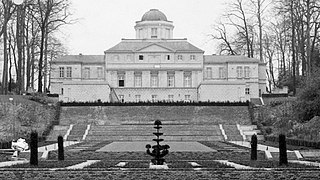
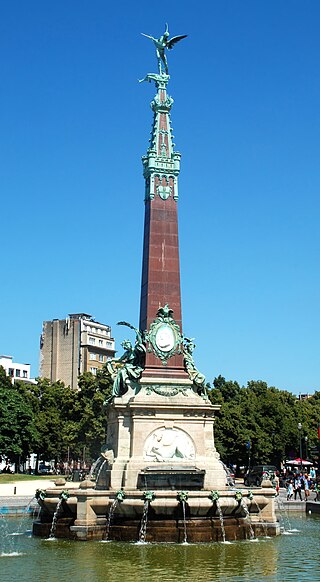
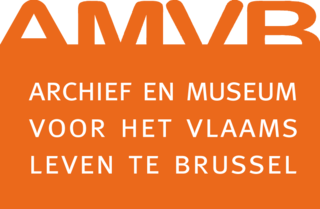
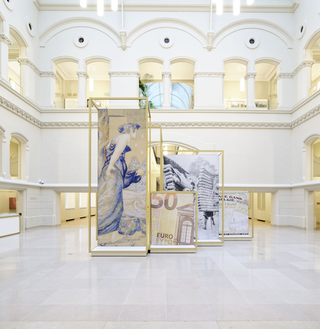
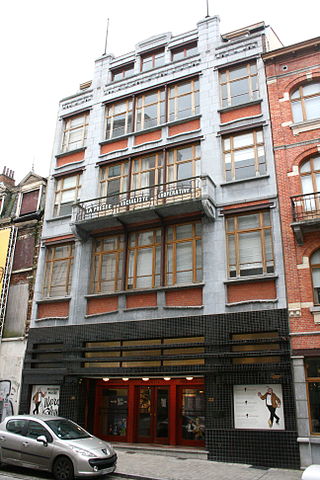


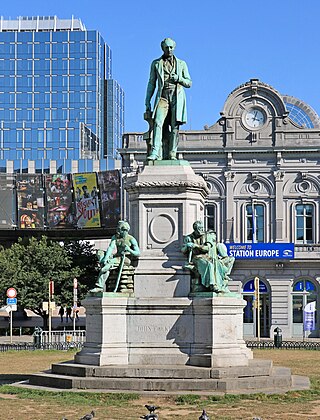
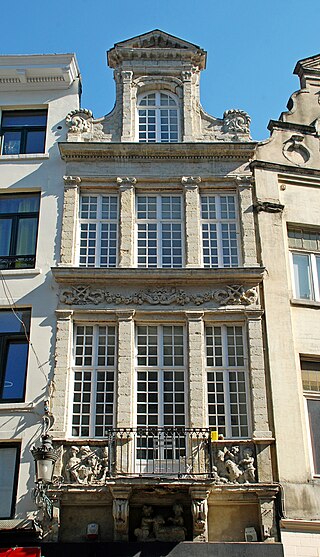
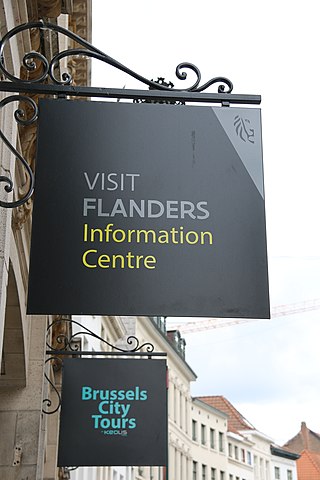
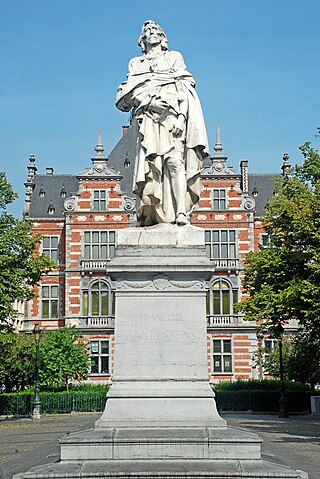
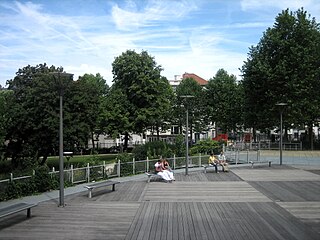
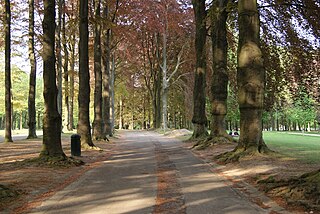
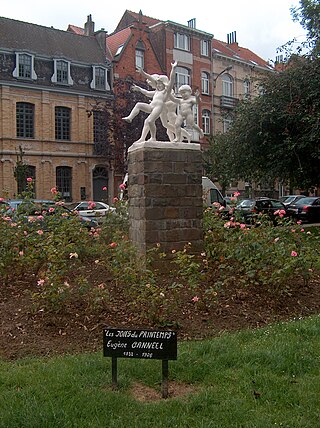
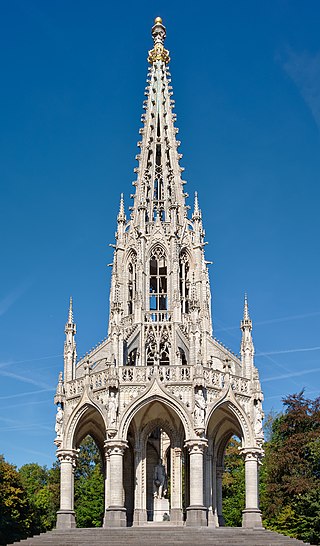
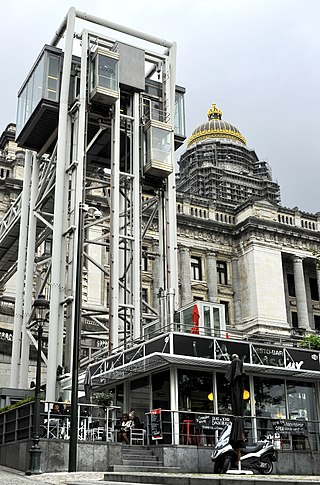
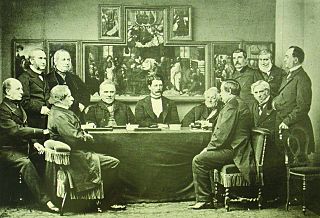
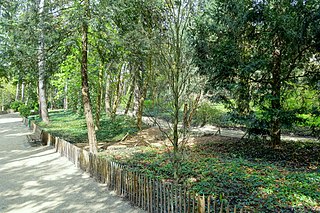
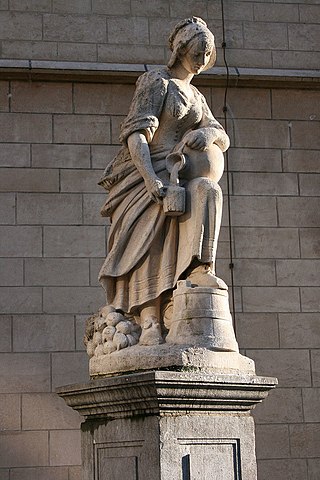
ment-Melancholia.jpg)

